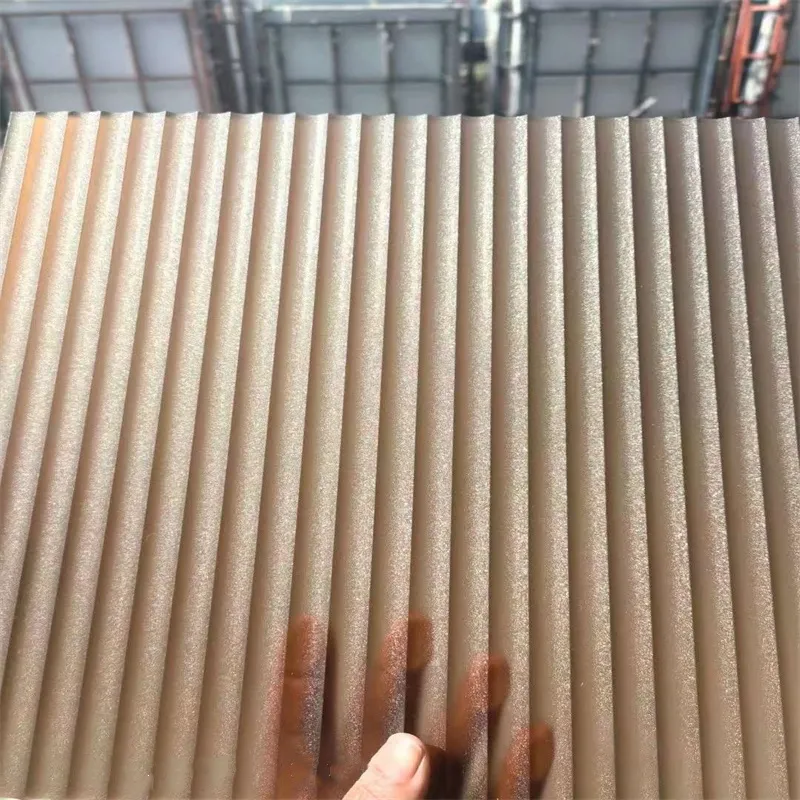Nov . 05, 2024 11:56 Back to list
low emissivity low e glass
Understanding Low Emissivity (Low-E) Glass An Energy-Efficient Solution
In an era where energy efficiency is a global priority, low emissivity (Low-E) glass has emerged as a significant innovation in building materials. This specialized glass is designed to enhance the thermal performance of windows and facades, making it a popular choice in both residential and commercial construction projects. In this article, we will delve into the properties, benefits, applications, and considerations of Low-E glass.
What is Low-E Glass?
Low-E glass is treated with a microscopically thin coating that reflects heat back to its source. This coating, typically made from metal oxides, allows visible light to pass through while minimizing the transfer of radiant heat. As a result, Low-E glass significantly reduces the amount of infrared and ultraviolet light that enters or escapes through windows, thus improving thermal insulation.
The 'emissivity' of a material refers to its ability to emit thermal radiation. Low emissivity materials have a low emissivity rating, meaning they hold onto heat better than their standard counterparts. This property is pivotal in reducing energy consumption by keeping indoor environments more comfortable regardless of external weather conditions.
Benefits of Low-E Glass
1. Energy Efficiency One of the primary benefits of Low-E glass is its contribution to energy efficiency. It can reduce energy costs by up to 30-50%, depending on the climate and already existing window types. By minimizing heat transfer, Low-E glass helps maintain consistent indoor temperatures, reducing reliance on heating and cooling systems.
2. UV Protection Low-E glass blocks a significant portion of harmful ultraviolet (UV) rays, protecting interiors from fading and damage. This characteristic is especially beneficial for homes with furniture, artwork, or flooring that can be adversely affected by UV exposure.
3. Comfort Improvement With improved thermal performance, Low-E glass enhances overall comfort levels. It reduces cold drafts in winter and keeps indoor spaces cooler during the summer. This is critical for spaces like homes, offices, and schools where occupant comfort is a priority.
4. Noise Reduction Low-E glass often comes in double or triple glazing configurations, which not only improve thermal insulation but also provide soundproofing benefits. This feature is especially appealing in urban environments where noise pollution can be a concern.
low emissivity low e glass

5. Environmental Impact By lowering energy consumption, Low-E glass solutions contribute to a reduction in greenhouse gas emissions. This makes them an environmentally friendly option, aligning with sustainable building practices and green certifications.
Applications of Low-E Glass
Low-E glass has found its application across various sectors. In residential buildings, it is commonly used for windows, sliding doors, and skylights. For commercial structures, it is employed in curtain walls and storefronts. Additionally, Low-E glass is increasingly being integrated into innovative designs, including smart windows that can adjust their properties in response to external conditions.
Considerations When Choosing Low-E Glass
When selecting Low-E glass, several factors should be considered
- Climate The effectiveness of Low-E glass can vary based on geographical location. In colder climates, a low U-factor (heat transfer resistance) is essential, while in hotter regions, the focus should be on reducing solar heat gain.
- Glazing Options Low-E glass comes in various configurations, including single, double, or triple glazing. Choosing the right combination is vital based on specific insulation needs and budgets.
- Aesthetic Preferences While Low-E glass performs exceptionally well, it can also affect the appearance of the building, especially regarding color, tint, and reflectivity. It’s essential to balance performance with desired aesthetics.
Conclusion
Low emissivity glass is a transformative innovation in the realm of energy-efficient building materials. Its ability to regulate heat transfer, protect against UV rays, and enhance occupant comfort makes it an ideal choice for modern architecture. As sustainability becomes increasingly paramount in construction, Low-E glass stands out as a practical solution for those looking to minimize energy consumption and environmental impact. Understanding its properties and benefits can help homeowners and builders make informed decisions that contribute to a greener future.
-
Safety and Style with Premium Laminated Glass Solutions
NewsJun.24,2025
-
Reinvents Security with Premium Wired Glass
NewsJun.24,2025
-
Premium Float Glass Line for Modern Architecture
NewsJun.24,2025
-
Low Emissivity Glass for Energy-Efficient Architecture
NewsJun.24,2025
-
High-Performance Insulated Glass Solutions for Modern Architecture
NewsJun.24,2025
-
Elevates Interior Style with Premium Silver Mirror
NewsJun.24,2025
Related PRODUCTS














